These States Are Helping Travelers Better Understand and Appreciate Indigenous History
Celebrate National Native American Heritage Month in these four fantastic places.
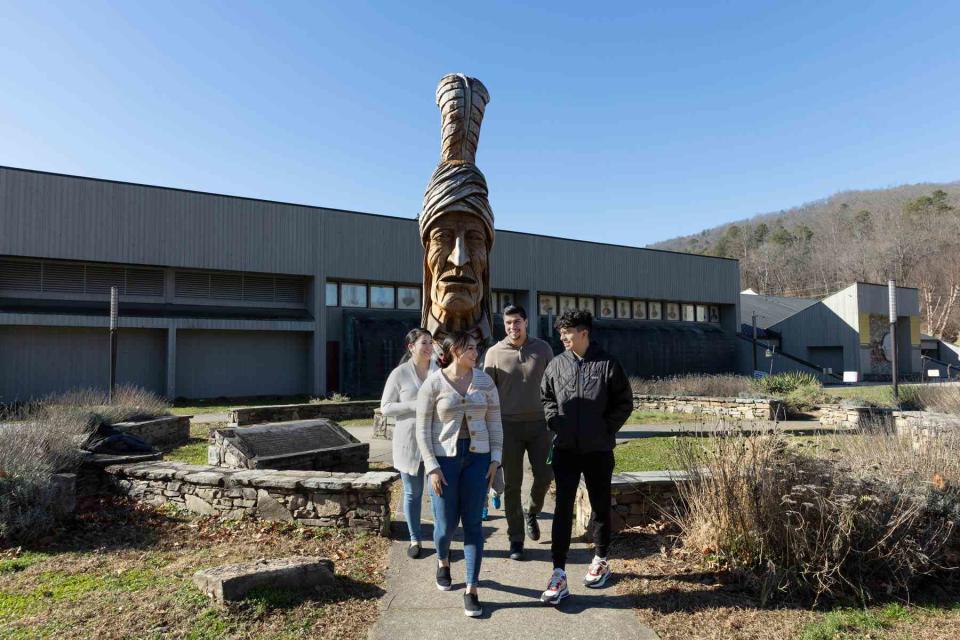
Courtesy of Museum of the Cherokee Indian
The United States is home to some of the most beautiful landscapes in the world, landscapes that people travel from all over the globe to see. From standing at the edge of the Grand Canyon to witnessing the power of Niagara Falls, it's all too easy to get lost in the nation's beauty and forget about the history of the land.
But long before the Going-to-the-Sun Road traversed Glacier National Park, the Blackfeet, Salish, Pend d'Oreille, and Kootenai hunted, fished, and gathered there. And before the iconic observation tower was built atop Clingmans Dome in Great Smoky National Park, the land was home to the Cherokee, who had developed permanent towns, created an extensive network of trails, and cultivated croplands.
The reality is that no matter where in the United States you go, you'll be visiting the ancestral land of Indigenous people. And it's critical that as travelers, we both know the names of the groups that came before us and understand their significant cultural histories.
"Travel can be transformative when it takes us to places we haven't been, and 'places' applies to the mind and spirit as well as locations. You might know about the Trail of Tears, but when you connect with Cherokee life and culture, you expand your understanding of what was taken, of all that was lost and the lifeblood that remains," Wit Tuttell, executive director of Visit North Carolina, shared with Travel + Leisure via email. "Travel has a unique power to help us connect, understand, and respect what lies beyond our immediate lives. By opening our worldview, these cultural experiences can change us in positive ways."
To fill the gap in traveler awareness and honor the Indigenous peoples who were forcefully separated from their homelands, many U.S. states are offering cultural activities and events during November, which is National Native American Heritage Month, and beyond.
Below is a rundown of what four American states known for Indigenous history are doing to connect modern-day travelers with those who called these lands home long before the U.S. became a country.
Oklahoma
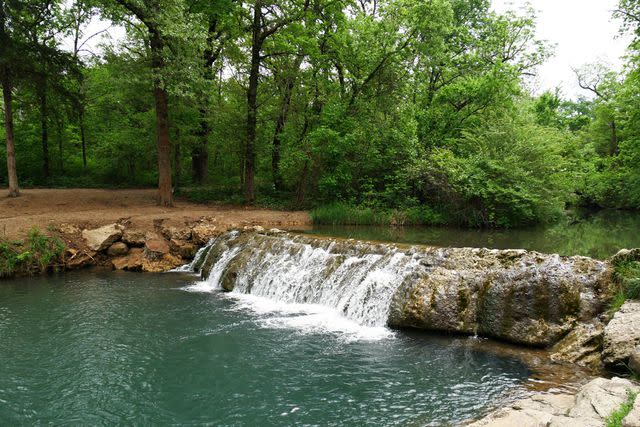
Getty Images
The Little Niagara falls in Chickasaw National Recreation Area in Sulphur, OklahomaWith the second-highest percentage of American Indian and Alaska Native residents in the U.S. and 39 federally recognized tribes, the state of Oklahoma is all about celebrating its Indigenous culture and honoring those who came before.
This year, in honor of National Native American Heritage Month, the Oklahoma History Center in Oklahoma City is offering a screening of "Choctaw Code Talkers" on Nov. 12. The documentary shows how the Choctaw soldiers of the American Expeditionary Forces (who, at that time, were not yet considered U.S. citizens) used their Native language to communicate in a way that German forces couldn't decode.
Throughout November, the Chickasaw Cultural Center in Sulphur, Oklahoma, will host almost daily events, including Chickasaw stomp dance demonstrations. Meanwhile, at the Philbrook Museum of Art in Tulsa, an exhibit titled "It's Corn!" will showcase how corn plays an important role in Indigenous culture.
Nature lovers will also want to visit the Chickasaw National Recreation Area in Sulphur. The beautiful, lush landscape was once inhabited by nomadic peoples who came to the area to enjoy the cool waters.
North Carolina
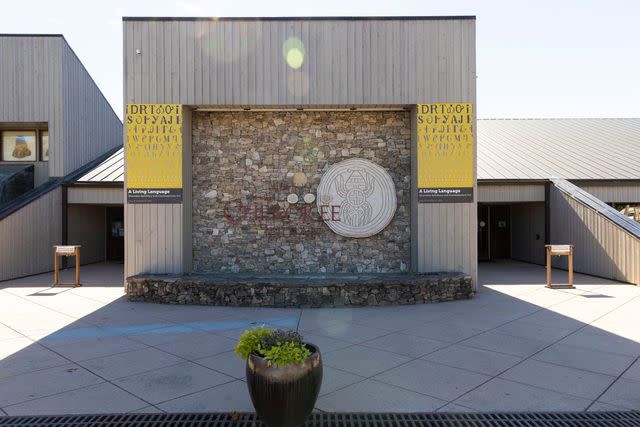
Courtesy of The Museum of the Cherokee Indian
North Carolina has the largest American Indian population east of the Mississippi River and the eighth largest in the country. The state of North Carolina recognizes eight tribes today: the Eastern Band of the Cherokee Nation, Coharie, Haliwa-Saponi, Lumbee, Occaneechi, Meherrin, Sappony, and Waccamaw-Siouan.
In honor of Indigenous peoples and cultures, November is jam-packed with events. On Nov. 9, there’s a giant American Indian Heritage Celebration in Raleigh with music, dance, art, and stories.
“All eight recognized tribes — the Cherokee and Lumbee plus the Coharie, the Meherrin, the Waccamaw Siouan, and three Saponi tribes — participate, which underscores the diversity as well as the common ground across a broad expanse of mountains, rivers, lakes, and other geographic areas,” said Tuttell of the event.
The celebration continues in the community of Cherokee near Great Smoky Mountains National Park. Travelers can visit sites like the Museum of the Cherokee Indian and the Oconaluftee Indian Village and shop handicrafts made by Cherokee craftspeople at the Qualla Arts & Crafts Mutual. For an outdoor excursion, head to the Quanassee Path in Hayesville. The two-mile walk is studded with Indigenous sites and activities, including the Cherokee Cultural Center, Cherokee Homestead Exhibit, Cherokee Botanical Sanctuary, Old Jail Museum, and Quanassee Village.
New Mexico
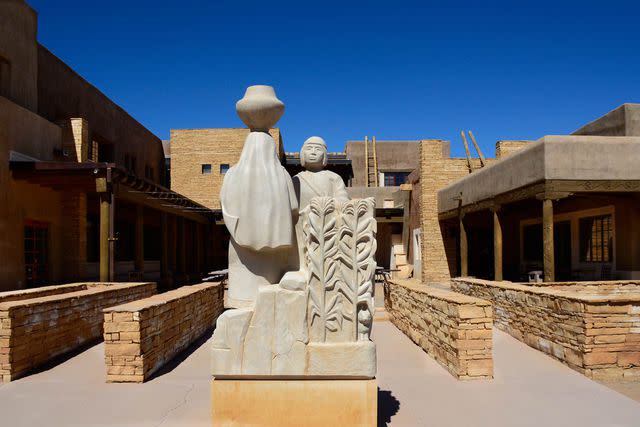
Robert Alexander/Getty Images
The Sky City Cultural Center and Haak'u Museum is at Sky City, one of three Native American villages which make up Acoma Pueblo west of Albuquerque, New Mexico. The village, built mostly atop a mesa, has been continuously occupied by members of the Acoma tribe for more than 800 years.New Mexico is home to 23 pueblos, tribes, and nations and more than 1,000 years of Native culture. The state is also the place to go for some of the country's most authentic and well-loved Indigenous experiences.
One of the most popular is Acoma Sky City, the oldest continuously inhabited settlement in North America. Travelers can take a Native-guided tour to the ancient pueblo, which sits on top of a mesa. The well-preserved, multi-story buildings of Taos Pueblo are another must-visit. It remains unchanged from what Spanish explorers came upon long ago, and the site is the only Indigenous community designated as a UNESCO World Heritage Site and a National Historic Landmark.
Meanwhile, elaborate cliff dwellings at Gila Cliff Dwellings National Monument north of Mimbres, New Mexico, offer visitors a glimpse into the daily lives of ancient humans. Similarly, at Chaco Culture National Historical Park, travelers can see first-hand the engineering abilities of the Ancestral Puebloan people.
Travelers looking to support the Indigenous peoples of New Mexico financially should visit the Crownpoint Navajo Rug Auction, which takes place on the second Friday of the month. The auction is renowned for its genuine, hand-woven Navajo rugs, a tradition passed from mother to daughter.
Alaska
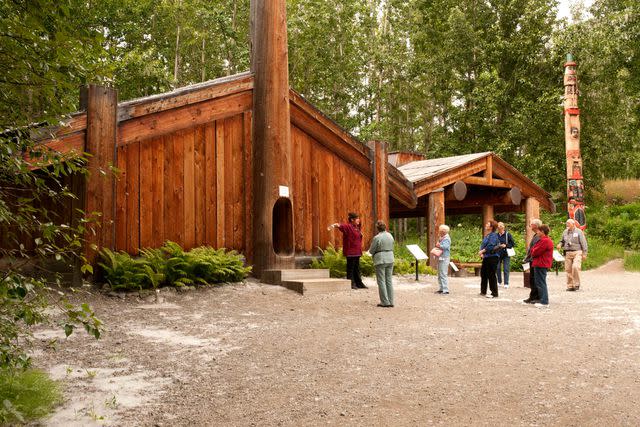
John Elk/Getty Images
According to the 2020 census, Alaska has the highest population of Indigenous peoples, with American Indian and Alaskan Natives accounting for 22% of the state’s population. There are also 229 federally and state recognized tribes in the state.
To properly acknowledge the Alaska Natives who call (or called) the state home, the Alaska Travel Industry Association recently released the first Alaska Native Culture Guide.
“It’s a fantastic introduction to what travelers can learn and experience when they come to Alaska. Reading a few of the traditional stories gives a taste of what they can learn from meeting Alaska Native peoples across the state,” Sarah Leonard, president and CEO of the Alaska Travel Industry Association, shared in an email.
The overarching goal of the guide is to help visitors understand how they can be better, more informed travelers. The guide includes practical information, like a regional map of Alaska’s recognized tribes, a list of Alaska Native events, and common greetings in several Native languages. Perhaps most importantly, Leonard said, “there’s a traveler’s etiquette and a section on how to practice Alaska Native values in the guide, which is so important for travelers who are coming to engage with our cultures.”
For more Travel & Leisure news, make sure to sign up for our newsletter!
Read the original article on Travel & Leisure.

